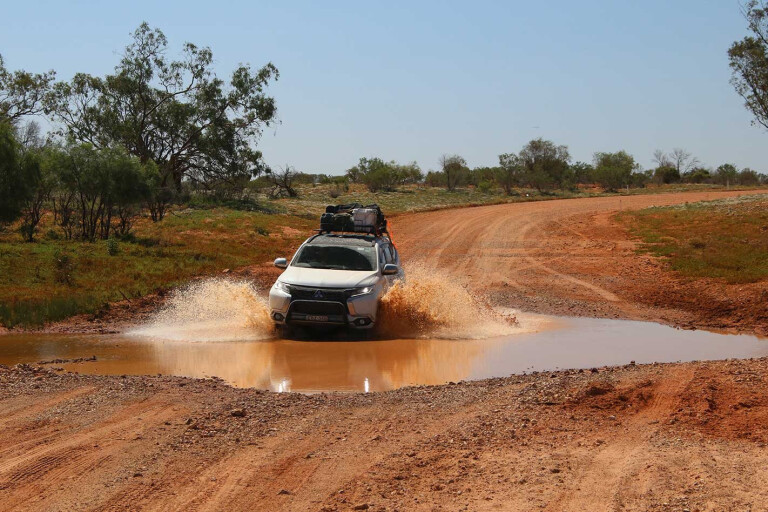
GEOGRAPHY quiz: What’s less than 1000km from Australia’s three biggest cities and dishes up a true taste of the Aussie outback? The answer: Bourke, NSW.
Yep, the tiny dot on the map that for many is a convenient place to restock before a broader adventure into the yonder is also surprisingly close (remember, we’re talking Australian outback close) to a fair chunk of Australia’s population, including Brisbane (924km), Sydney (758km) and Melbourne (982km).
Bourke is one of the bigger towns on the Darling River Run that meanders from Walgett in the north to Mildura on the Victorian border. It’s a fascinating insight into the former thriving port towns that played an integral role in transporting wool and establishing inland Australia as a source of income.
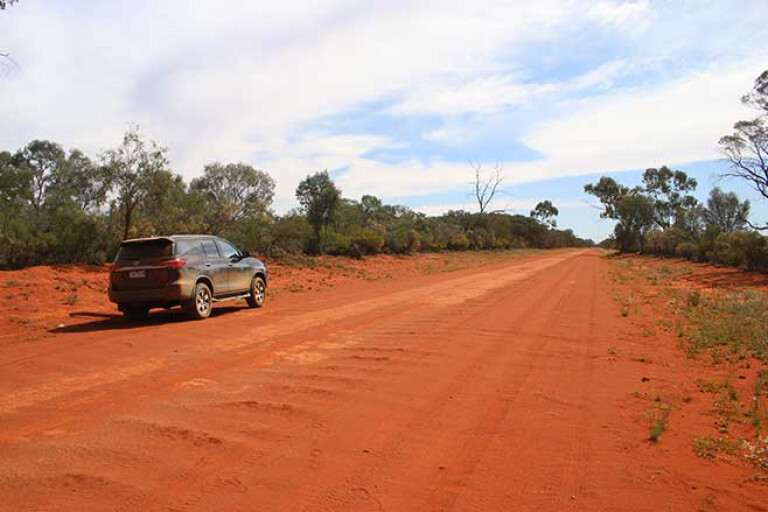
In all, there’s 730km to play with down The Run, but for this adventure we’re showing how you can change it up, crafting your own side trips delving into the best outback NSW has to offer. With national parks, Aboriginal culture and an insight into what makes the outback tick, the Darling River is the perfect spine to soak up the outback within a long day’s drive of big civilisation.
Much of the Darling River Run is on well-packed gravel roads. But like all outback adventures there’s always the risk of punctures. While 2H will suffice for much of the trip, it pays to have a proper 4x4 for variable road conditions –and so you’re not limited on any planned side trips.
BOURKE
WHICHEVER way you attack it from, Bourke is a decent drive. And the final run reinforces you’re in a less populated part of the country, wayward kangaroos and all.
Rolling into town is a welcome respite to the vast openness of the country that sprawls off in any direction. It’s impossible not to soak up at least some of the rich agricultural history of Bourke from the moment boots hit the pavement. Some regal two-storey buildings help the cause.
The modern Bourke doesn’t have the thriving industrial nature that defined the place in the late 1800s when dozens of wood-fired paddle steamers carried wool bales from surrounding farms down towards the Murray. Instead it’s a more relaxed outback town, albeit one oozing character from its working days.
If you want some respite from banging tent pegs into dusty earth there are some surprising finds, including the Riverside Motel with its beautifully restored high-ceiling rooms and main house that no doubt poured plenty of brews when it was the Telegraph Hotel.
The Bourke Bridge Inn is also a characteristic antidote to a motel. It’s outside the main town alongside the oldest moving-span bridge in Australia, constructed to allow passage for the boats that were the lifeblood of the river in its working heyday.
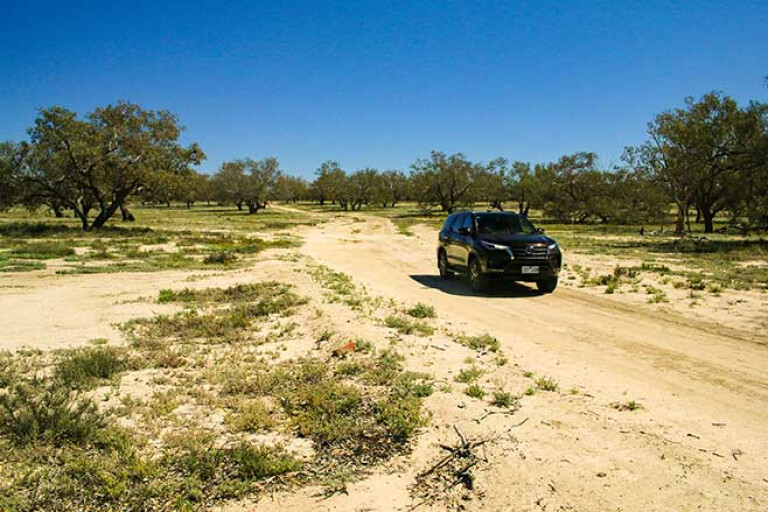
The Old Bourke Wharf is the former heart of the town, its spectacular multi-layered jetty the perfect place to soak up the tranquillity of the slow-running river. A ride on a paddle steamer is a reminder of Bourke’s formerly prosperous past, but during holiday times it pays to book to save missing out on the limited daily runs.
Even without the aquatic adventures, there are lots to explore in and around Bourke. Take the long road to the northern side of the Darling that forms a natural barrier on the edge of town, its steep banks overshadowed by ageing gums. The short but informative Maritime Trail even showcases the ruins of one of the original boats – and the Bourke Wharf is no less spectacular from the opposite bank, the lack of development reinforcing what the area was like prior to European settlement.
A tractor-sized 1923 Crossley engine is a stone’s throw from the banks of the Darling and is regularly fired up for tourists. While this particular engine did no work in Bourke’s early days – it was hundreds of kilometres away generating electricity in Sydney – it’s a reminder of the industrial past of the town on the unofficial edge of Outback NSW.
GUNDABOOKA
ANY Darling River Run will include plenty of kays travelling the main gravel road that heads south-west from Bourke. But it’s worth looking farther afield for some rewarding add-ons. Head south on the Kidman Way towards Gundabooka, which is one of those outback gems that throws up rocky surprises in an otherwise vast, flat and often featureless land (which, to be fair, has appeal of its own).
Road closures are common around here after rain, so ducking into the Bourke Visitor Centre before leaving town is worth the five minutes to ensure you’re properly prepared.
Delving deeper into the southern reaches of former grazing land takes you to Mulgowan, an easy drive with well-marked facilities. If you’re not up for one of the longer bushwalks in the park, the 1.4km track through Mulareenya Creek is less daunting and wonderfully picturesque.
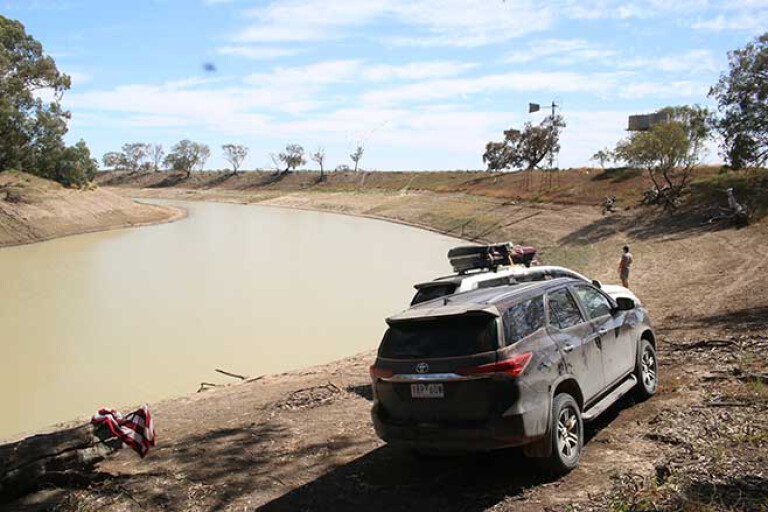
The short walk over a rocky pinch and into the mostly dry creek is a pleasant change from the vastness elsewhere. A rest on a rock is a chance to reflect on the serenity of a place that doesn’t look much changed from what it would have looked like thousands of years ago.
But it’s the Aboriginal rock art at Mulgowan – or Yappa – most come for, something that doesn’t disappoint. Walkways and fences make the main site obvious, images of emus and humans on overhanging ledges easy to make out. Follow the rocks farther around for another batch a few hundred metres along.
There are various campgrounds among the dense vegetation or an old shearers’ quarters and homestead providing self-contained accommodation for larger groups.
Well-posted roads direct you north back to the River Run or you can keep the National Park theme running with Toorale to the north. The former pastoral land was reclaimed from the government and designated a state area a decade ago, marking one of the newer places for visitors to explore.
STATION STAYS
SHEEP and sheering are still big business in north-western NSW, but a growing number of stations cater for 4x4 adventurers as well. Rose Isle station is one of the early contenders, providing well-manicured campgrounds or something closer to nature along the river.
Sure, the campsites are numbered, but you’ve got a patch to make you feel like you’re the only ones there. It’s a drive to the amenities, which include a newly established donkey shower complete with a blue-sky view. Be sure to stoke it up with wood to keep things toasty.
One thing that isn’t in short supply is firewood courtesy of the hardy trees surviving on often sporadic rain and whatever they can draw from the river. So it’s a short drag of some larger logs to keep the coals burning.
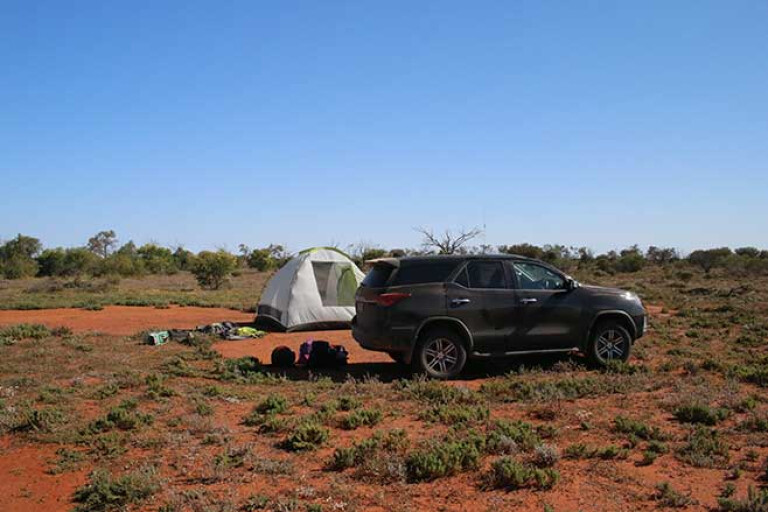
Oh, and don’t forget the morning tea, where Samantha shows off her baking skills (you really, really don’t want to miss it!) and will fill you in on a story or two.
Camping and accommodation choices ramp up as you continue the journey. Trilby and Kallara are two popular choices. Or there’s Dunlop Station that was once more than a million acres and has recently undergone a restoration having been abandoned for years. The 11am tour is a fascinating insight into life on a big sheep station many moons ago. It includes full access to the homestead and the old store that provided supplies to workers and neighbouring properties. No shortage of stories for a reminder of how tough farm life was way back when. Get ready for the one about the meat ants …
Dunlop camping is great, too. One of the picks is Wheelchair Camp – ask them about the name, there’s half a story to go with it – which is at the end of a line of camps giving the impression you’re there alone. If you’re not one to brave a swim (well worth it) an abandoned fish trap even provides the chance to catch dinner.
LOUTH, TILPA
THE road that vaguely follows the River may conjure images of a meandering track. But it’s mostly very well maintained gravel, albeit with all the outback caveats to be ready for anything. Dips or corrugations occasionally pop up and after rain there will be bog holes that should be avoided where possible, at the very least to stop churning up the road surface.
Tiny one-pub towns hugging the riverbank break the drive. A general store and a cemetery are the main appeal in Louth. That and the quaint bridge shrouded by gumtrees that allows a crossing to the north of the Darling.
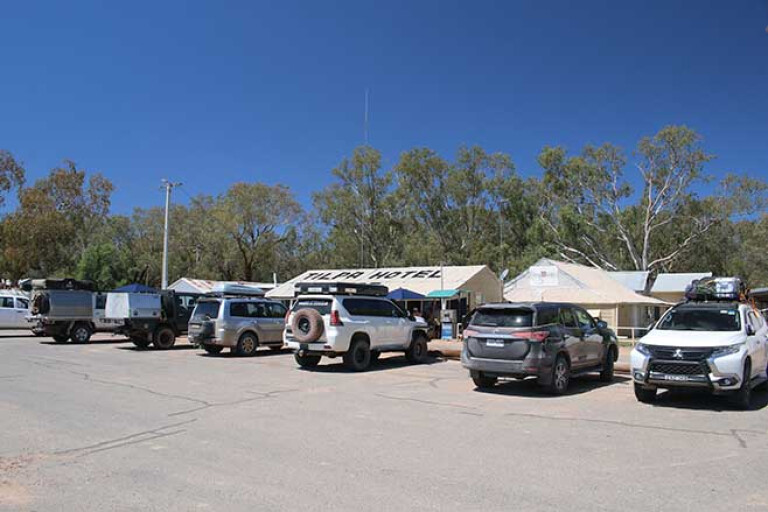
Louth is one of those towns that most would blaze through, unaware of its history. The cemetery is a good place to start. Rather than the crumbling headstones so common in burial grounds, there is one enormous ‘shining headstone’ that lives up to its name at sunset, reflecting the golden light from its 1.2m-high Celtic cross through town, albeit momentarily. The monument to local woman Mary Mathews was erected in 1886 and remains a beacon.
The Tilpa pub is a must-stop to bend an elbow on a cold brew. It’s a popular watering hole with good reason. How they get the hot chips better than most city pubs could be testament to the TLC metered out in the kitchen. All of which suggests it pays to allow time to refuel, with sprawling outdoor tables catering for overflow.
If you don’t have time for a feast, make a small donation and grab a pen to scrawl a message on the pub walls.
PAROO-DARLING
FROM Tilpa most adventurers stick to the river. But tracking north takes you into Paroo-Darling National Park. It’s vast, scrubby country that has far fewer tyre tracks than other roads around here. While the regular River Run has its fair share of cars during tourist season it’s refreshing and more reminiscent of the wider outback to see open roads virtually devoid of other vehicles.
The occasional shingleback or wedge-tailed eagle give an inkling to the wildlife on offer, and visiting after rain, the flies and mossies are also friendly.
Paroo-Darling has the sort of roads that are fine in 2WD most of the time, but having a 4x4 is a must in case things get sticky. Picking your way around mud holes and ridges can easily slow those higher speeds elsewhere.
It’s rocky country with hardy mulga and saltbush scrub, with the majestic Peery Lake at its heart. Fed partially from the Great Artesian Basin, the permanent water source is bursting with bird life, so don’t forget the binoculars. Braver folk can go for a dip or break out a canoe for some outback paddling.
WHITE CLIFFS
NEXT stop is opal country and the home of underground living, White Cliffs. Thousands of rock piles have transformed the barren rocky landscape, an eerie visual reminder of the town’s reason for being.
Whereas big mining companies dominate the collection of most minerals and gemstones, opal mining is mostly the domain of individuals and families hoping to strike it rich by picking away at rocks for the proverbial coloured needle in a haystack. White Cliffs is famous for the giant pineapple opals that collectors pay hundreds of thousands for, something that acts as a lure for strike-it-richers.
There’s the occasional grand, glassy residence on one of the low hills at the centre of town but for the most part, the underground ‘dugouts’ and basic houses are an indication most are yet to hit the big time.
A driving tour around town reinforces the sole reason most are here: opal mining. Trucks and mineshaft buckets litter the landscape. The occasional campervan and well-used truck break things up. Optimism runs high for many. But be careful not to wander too far from your car, because those rock piles are alongside often deep holes that could nicely ruin a holiday.
Book early if you want to stay in dark and 23-degree cool of the Underground Motel, too. Or take a tour underground to see just how hit-and-miss opal mining is. There’s no shortage of fascinating stories.
WILCANNIA
SURE, the Darling River Run continues far farther than Wilcannia, taking in the beauty of Menindee Lakes or to the culinary feasts of Mildura. Or you can head west to Broken Hill then on to the Flinders Ranges and beyond. Burke and Wills country is not far away, nor is Birdsville.
But Wilcannia is also an easy place to pull up stumps and head for an easy blacktop drive home, although not after some exploration. Whereas Bourke has begun to capitalise on its tourist appeal, Wilcannia has yet to catch up. Many buildings remain empty, businesses abandoned.
The lack of accommodation in town reinforces its current standing, although Warrawong on the Darling a few kilometres south has cabins and camping with basic facilities. Warrawong’s take on Bondi Beach is a bit different to the Sydney version, but it at least has red and yellow flags!
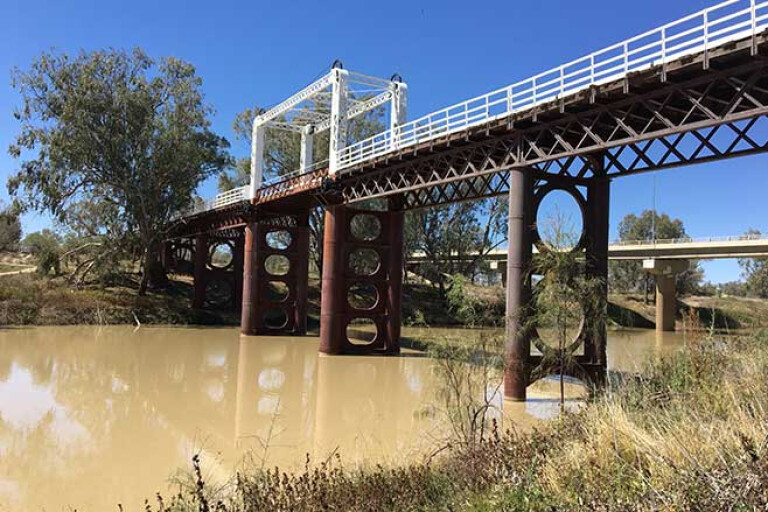
There are elements of Wilcannia that remind of its vibrant past, the grand buildings as graceful as ever. There’s some genuinely magnificent architecture. Dig deeper and there’s lots to explore, including details of the Wilcannia Rowing Club. Yep, it was a thing. Or the old Lion Brewery owned by Edmund Resch before he crafted Resch’s into a true Aussie bloke’s beer.
Beautifully maintained buildings are a grand reminder of the town’s wealthy past. The self-guided tour of town – make sure you check out the hospital – is the bare minimum to learn more about a place most don’t bother stopping for.
Wilcannia is a place with plenty more to offer than its lack of facilities would suggest. If we were cracking out the crystal ball, we reckon the history and architecture suggests that sometime in the future, Wilcannia will be more of a tourist stop than the shell it is today.
As it is, it’s a fitting full stop on an outback adventure that nicely melds Indigenous and European history into a relatively accessible part of the country.
ESSENTIAL INFO
Bourke is a relatively accessible entrée to the Australian outback with terrific Aboriginal and agricultural heritage, superb camping and other accommodation options.
There’s some bush camping along the Darling River Run, but utilising the facilities of a station is a more comfortable way to do it while still feeling like you’re alone.
Take the swimming gear and binoculars to make the most of river life.
If by the end of the truncated Darling River Run you’re up for more, there are no shortage of places to explore. Head a couple of hundred kilometres west to tag along with Burke and Wills country. Or a similar distance to Broken Hill then onto the Flinders Ranges. Or you can set the compass north for Birdsville and the Simpson.
Keep in touch with local tourist authorities to learn of any road closures; they’re common out this way after rain.

COMMENTS